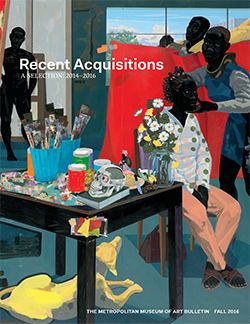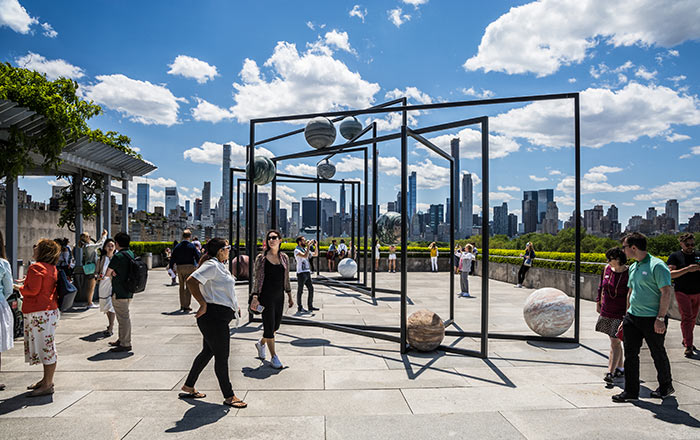Rigati e Tessuti, no. 3976
Carlo Scarpa Italian
Manufacturer Venini & Co., Murano, Italy, established 1921 Italian
Not on view
Between 1932 and 1947, Carlo Scarpa worked closely with Paolo Venini and other master glassblowers to pioneer techniques, silhouettes, and colors that thoroughly modernized the ancient traditions of the glass-making Venetian island Murano. New methods of surface decoration were invented and each vessel is named for the techniques employed in their making, emphasizing the fact that experimentation was crucial to producing such a dazzling array of visual and material effects.
Rigati e Tessuti is Carlo Scarpa’s interpretation of the mezza filigrana technique. In mezza filigrana, clear glass rods are fused with a piece of lattimo (milky) or colored glass. Here, instead of using clear glass, Scarpa used only rods of colored glass to give each piece a colorful, linear texture. Rigati involves the cold-joining of rods that are subsequently hot-joined and shaped into the final design using a mold of glassmaker tools. Tessuti glass is blown and shaped using a "fabric" (tessuto) of hot-joined colored rods. Sometimes, this form is then covered in a thick layer of clear glass, resulting in what is known as Tessuto sommerso. Here, colored rods serve to emphasize this piece’s verticality as it expands and then delicately tapers towards the top.
This image cannot be enlarged, viewed at full screen, or downloaded.

